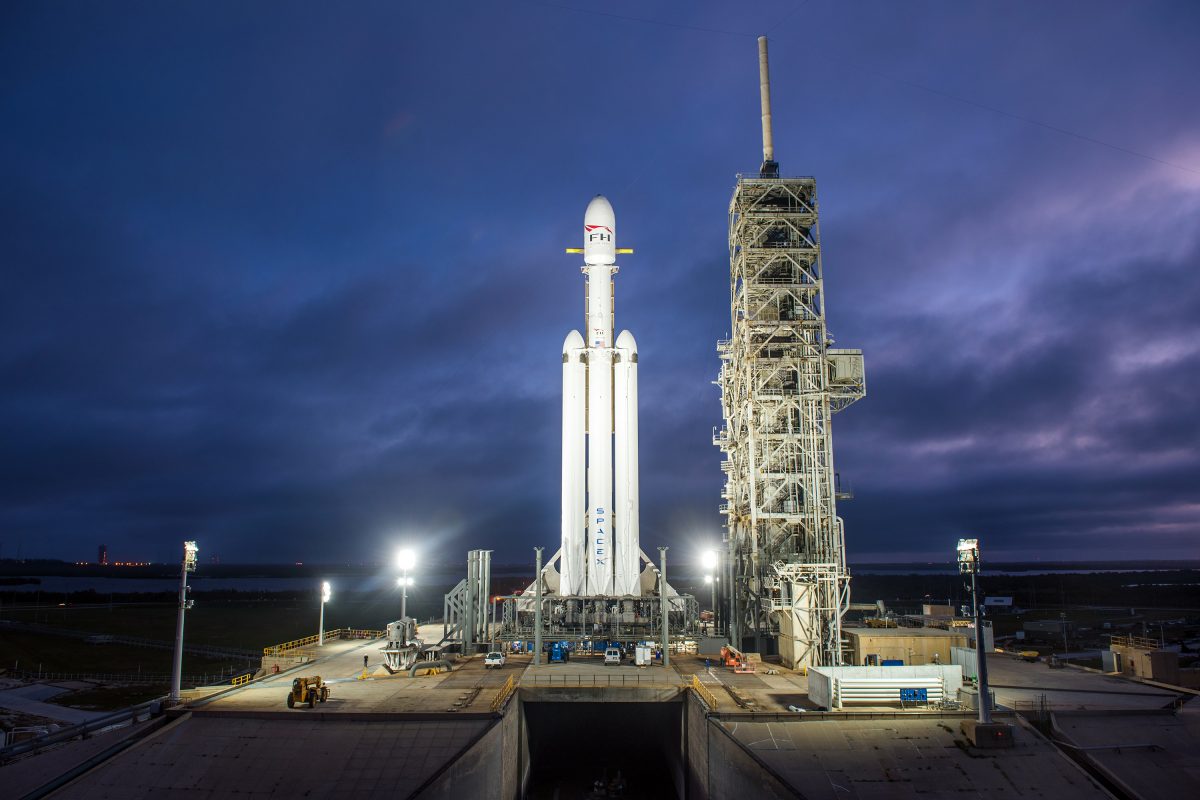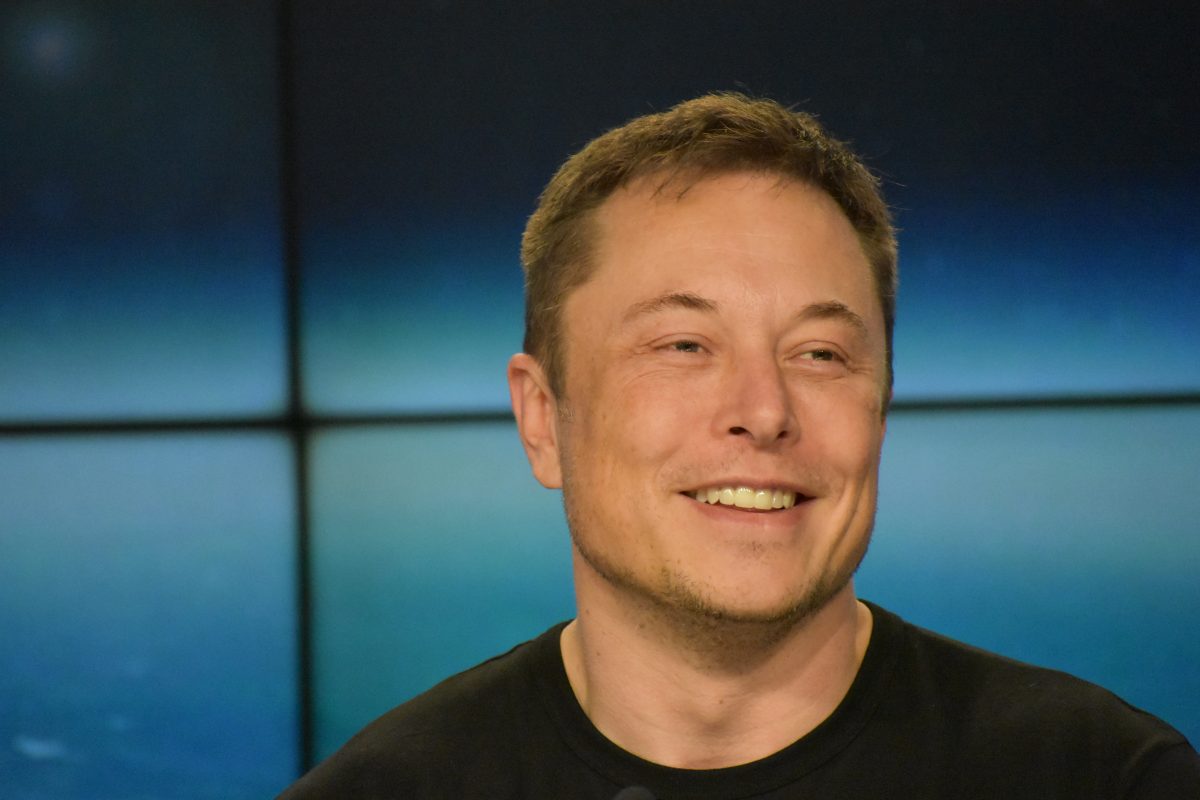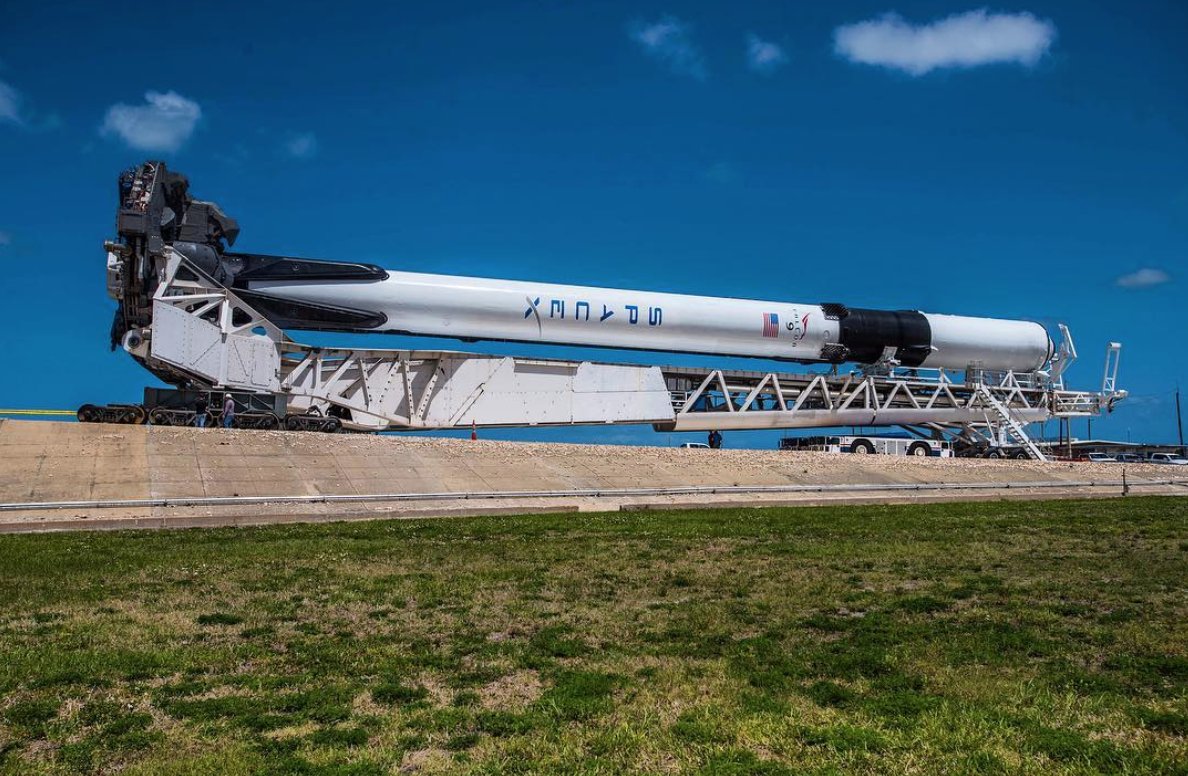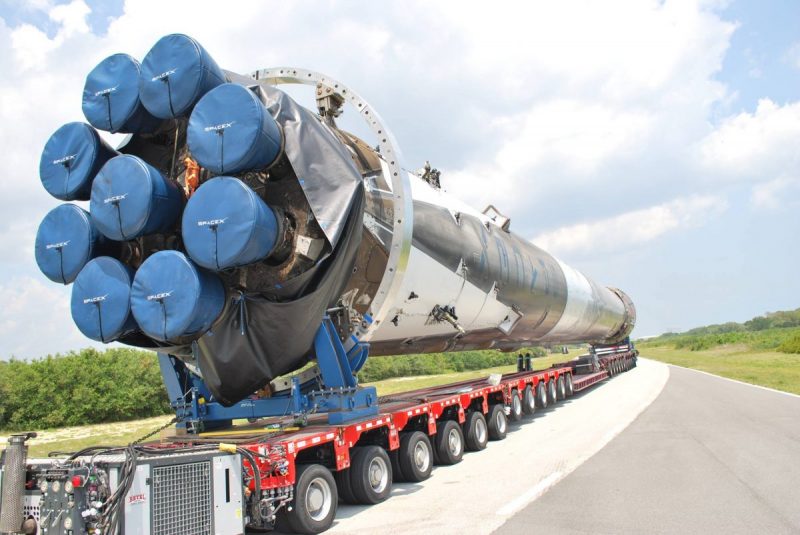SpaceX has successfully launched the maiden flight of its new Block 5 Falcon 9 rocket from NASA’s Kennedy Space Center with Bangladesh’s Bangabandhu-1 geostationary satellite.
The next and final incarnation of SpaceX’s workhorse rocket, the most launched in the world in 2017, lifted off from historic Apollo 11 Pad 39A at 4:14 PM Eastern and flew back to sea for a landing atop the autonomous drone ship Of Course I Still Love You after delivering its payload to orbit.

The mission marked SpaceX’s 9th launch of 2018, which according to CEO & founder Elon Musk, puts the company on track to double the number of orbital missions it completed last year. On top of competing with other commercial companies like United Launch Alliance and nations like Russia for the launch record this year, SpaceX intends to fly half of its expected 26 missions atop previously flown boosters.
Reporters learned from Musk during a pre-launch press conference that customers are charged $50 million per launch on what SpaceX calls a flight-proven Falcon 9––less than the advertised $62 million for a lift on new rocket.
 (Image Credit: SpaceX)
(Image Credit: SpaceX)
“Well, I think it’s important to appreciate the fundamental motivations that I have, and I think that the team at SpaceX has, which is that we really want SpaceX to be a forcing function for improving, dramatically improving space technology to the point that it enables humanity to become a multi-planet species. Get out there and have a base on the moon and Mars, and ultimately even on the outer planets. To really expand the scope and scale of consciousness, and make sure that in the hopefully unlikely event of something happening here on Earth that the light of consciousness is not extinguished. Which is I think an extremely important thing to secure. I mean it’s not going to matter to me, I’ll be long dead, nor is it any kind of picnic to go out there and establish self-sustaining bases on places not on Earth. It’s dangerous. People are going to die. It’s going to be difficult. Very few people will want to take on this dangerous hard work. But I think it’s important for the future of humanity, and for also preserving life as we know it on Earth. Because we are life’s agency, and have some responsibility, as life’s agency. That’s just my opinion. So, from our standpoint it was really critical to keep advancing rocket technology and achieve full and rapid reusability, in the absence of which spaceflight would always be too expensive. As you’ve probably heard me say, if aircraft were not reusable and you needed a new one for every flight, then each ticket would cost millions of dollars, at least. One way. You’d need two for a two-way trip. And almost no one would be able to afford to fly. And that’s the situation we’re in with expendable rockets today. And what happens once you achieve reusability, then tickets can go from a million dollars, to a few thousand dollars, or a few hundred dollars for short trips. And then fundamentally spaceflight will be open to almost anyone, just as air flight is. And so that’s why we did all this. We could have stopped innovating a long time ago and still had a very high market share, a majority share of the world commercial launch market. But that wouldn’t have [fit within?] our philosophical goal.” SpaceX Founder & CEO Elon Musk

SpaceX is expecting to reduce the cost even further by pushing for further reusability of components other than the Falcon 9 booster itself, which accounts for 60% of the cost of building a rocket.
The payload fairing, which has been upgraded to version 2.0 for the Block 5, accounts for 10% cost or around $6 million and SpaceX is working on recovering it using a parasail to guide it into a net attached to a boat. Musk revealed that SpaceX was exploring balloon technology to recover the upper-stage which accounts for 20% of the rocket.
The goal? To implement successful recovery of all Block 5 Falcon 9 components and increasing the launch cadence that will result in a dramatic decrease in space access, especially with SpaceX launchers.
SpaceX celebrated its 16th birthday last week with almost no mention of it. The early days of the company were tumultuous as they attempted to launch the Falcon 1 from Kwajalein Atoll in the Pacific Ocean. The first three heritage flights of the booster manufactured when Elon Musk personally oversaw design work, failed each time. The company was down to its final penny when they attempted to launch a fourth time, which ultimately succeeded.
Musk explained that no one would take the job.

Following the breakthrough, SpaceX would only launch a single successful commercial mission atop the Falcon 1 until moving on to Falcon 9. As of today, SpaceX has completed 53 Falcon 9 missions, landed 14 times on the drone ship, touched down 11 times on ground at Cape Canaveral, and have reflown of those recovered 11 boosters. Following last year’s first re-flight of a Falcon 9 rocket, Musk set a new goal: To launch, recover, and relaunch a single booster within 24 hours and SpaceX intends to reach this milestone next year using its new Block 5 Falcon 9.
“We’re going to be very careful and deliberate about this, but that will be I think truly remarkable, to launch an orbit-class rocket, the same orbital-class rocket twice in one day,” said Musk. “Because there’s only so much work you could even do in one day, and a bunch of it consists of transporting the rocket from its landing site back to the launch site, mounting a new satellite on the rocket, and loading propellant, and going.”
The Block 5 was designed to be launched 10 times with almost no scheduled refurbishment but merely a refuel. After every 10 flights, SpaceX will inspect and do maintenance on the booster so it could continue on toward an ultimate lifespan of 100 flights “maybe more,” Musk proposes.
 (Image Credit: SpaceX)
(Image Credit: SpaceX)
But don’t expect the Block 5 Falcon 9 to be rapidly firing off from Cape Canaveral and Vandenberg Air Force Base in California, as limitations from range access that will conflict with other launch providers and regulations still in place by the FAA, will prevent a such a cadence from being possible. Also, with companies like Rocket Lab, Vector Space, and others entering the small launcher market, range access will be crowded as these new companies are also making homes at America’s handful of launch pads.
Many of those future flights of the Block 5 Falcon 9, which SpaceX thinks will be the “most reliable rocket ever built” will be carrying humans to the International Space Station for NASA’s Commercial Crew Program. “We need to exceed all of NASA’s human-rating requirements for Block 5, and they are quite extensive, Musk says. NASA officials have voiced concerns regarding SpaceX’s “load and go” approach to fueling its rocket with passengers already on board. A concern that stems from the fueling incident in 2016 that destroyed a Falcon 9, customer payload, and the launch facility.
SpaceX is touting the Crew Dragon Capsules Launch Abort System as an effective safety measure while the Block 5 was upgraded with new composite overwrapped pressure vessels, the source of the company’s previous explosion. Musk explained that the new pressure vessel has doubled the rating for its burst capacity and argued that it was the most advanced ever developed, agonized over by the SpaceX’s top minds.
“We’ve tested the living daylights out of it. We’ve been in deep, deep discussions with NASA about this,” said Musk. “And worst case scenario, we’ve already demonstrated that Dragon is fully capable of a safe abort from zero velocity, zero altitude, and escaping whatever fireball that may occur on the pad, even in a worst-case situation.”
SpaceX could build somewhere between 30-50 Block 5 Falcon 9 rockets that will put into rotation as they pursue nearly 300 missions before retiring the Falcon 9 altogether. But SpaceX has expressed in the past that they will retain a number of boosters to serve customers that prefer the vehicle.
The company is shifting a significant amount of resources into a catch-all vehicle capable of completing missions that technically, can be done by either the Falcon 9 or Falcon Heavy. However, the BFR is a massive vehicle that maybe be overkill for missions to low-Earth orbit. SpaceX may end up using its Falcon rocket line as much as they can as they prepare to send BFR with humans to Mars.









